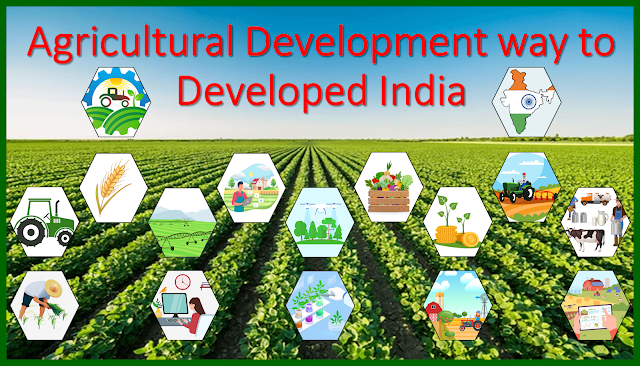Dream of a Developed India: A Path through Agricultural Development
Indian Prime Minister Narendra Modi is aiming to transform India into a Developed Nation by 2047, marking the completion of a century since the transfer of power from Britain to India in August 1947. A Developed India signifies the complete prosperity of its citizens, with agriculture playing a vital role in achieving this goal. The current population of 147.76 Crore Indians will necessitate sufficient and nutritious food for a developed India.
Presently, India heavily relies on importing essential food products such as pulses, edible oil, tree nuts, sugar, spices, and cotton, leading to a supply chain that is entirely dependent on imports. This dependence poses a potential disruption at any time and imposes a financial burden of USD 37 Billion, steadily increasing from USD 12.5 Billion in 2019. In contrast, India exported agriculture commodities worth USD 19.86 Billion in 2023.
India's diverse climatic conditions offer the opportunity to reduce import bills and increase agricultural commodity exports. Policymakers should focus on enhancing agricultural productivity. With 159.7 million hectares of agricultural land, the second-largest globally, and 82.6 million hectares of irrigated land, India can emerge as a net exportsr. Despite possessing favorable factors like land, labor, resources, climate, and biodiversity, India's dependence on edible farm produce imports must be addressed.
 |
| Dream of a Developed India: A Path through Agricultural Development |
Strengthening the agricultural sector is crucial for overall development and the realization of a developed India. With the world's largest population share, India must prioritize the agricultural sector for holistic development.
Employment Creation
A significant portion of the population is engaged in agricultural production, making agriculture the largest employment creator in India. Importing farm produce not only leads to foreign exchange outflow but also results in lost employment opportunities related to that production. Improper post-harvest management contributes to significant losses in fruits, vegetables, and other non-perishable items. Properly developing the agriculture sector can mitigate wastage, adding value to the nation's economy. Agriculture can create employment in various sectors like Information Technology, Data Management, Aviation, Drones, Artificial Intelligence, Transportation, Sales Marketing, Food Processing, International Trade, Mechanical Engineering, and Shipping, requiring a skilled workforce.
Technology Development
Agriculture is currently labor-intensive and relies on traditional farming methods. The evolving business environment demands technological development in agriculture. Technologies such as agriculture drones for monitoring and spraying, AI-based farm machinery for remote operations, controlled climate farming for year-round cultivation, data analysis for decision-making, weather forecasting, app-based data collection, on-farm input delivery, on-farm commodity procurement, and food processing technologies are essential. Introducing these technologies will not only benefit agriculture but also influence other sectors, creating a ripple effect in society .
Research and Development
Agricultural development will drive research and development as companies seek new products, solutions, and services to meet market demand and address challenges. A strong research and development environment will attract investment and contribute to the creation of intellectual property, paving the way for further advancements. Currently lagging in technological farming, India needs to focus on research and development to improve crop productivity and compete globally.
Inflow of Investment
The evolving business environment will attract new investments and create opportunities for global investors in the Indian agriculture sector. Heavy investments are required in farm inputs, machinery, post-harvest management, warehousing, food processing, and research and development. Prioritizing agriculture development will not only benefit production but also stimulate investments in linked sectors like mechanical and information Technology.
Human Resource and Education
Developed agriculture requires a high-quality human resource, necessitating a well-developed education system aligned with market requirements. Agriculture education has a wide scope globally, with subjects like plant protection, irrigation, harvesting, and nutrient management shifting to modern platforms such as blockchain Technology, artificial intelligence, and data-driven decision-making. Educating the younger generation in these technologies will prepare them for the challenges of modern farming.
Agriculture is the backbone of the Indian economy, catering to both production and demand sides. Overall development of agriculture is crucial to strengthen food supply and make India self-reliant in its pursuit of becoming a developed nation.

No comments:
Post a Comment